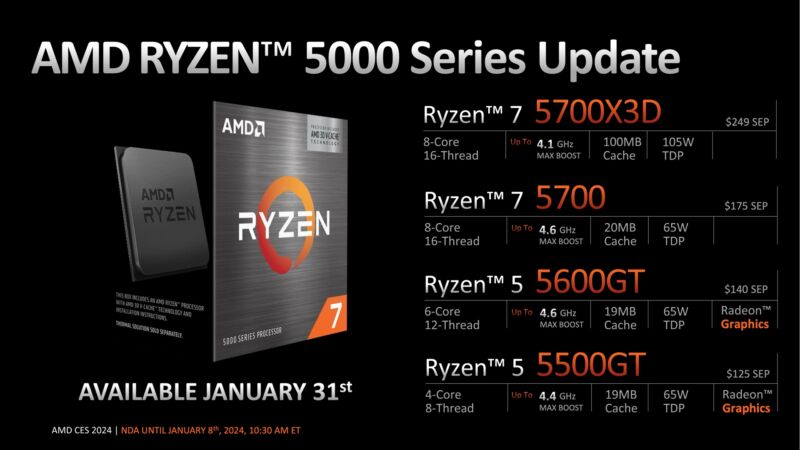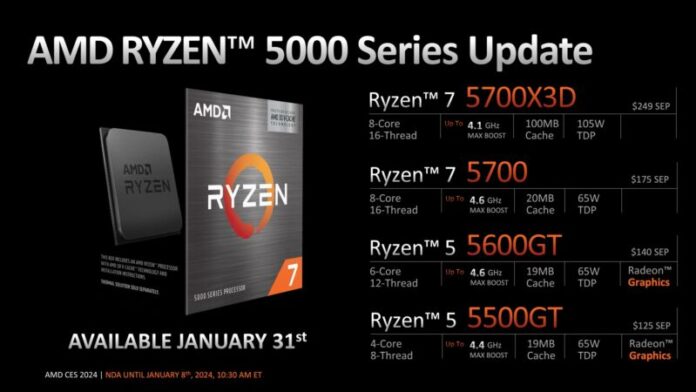
Enlarge / Four new Ryzen 5000 CPUs, all riffs on existing Ryzen 5000 CPUs. (credit: AMD)
AMD announced the first Ryzen 8000 desktop processors today: a new lineup of socket AM5 CPUs that bring RDNA 3 integrated GPUs and an AI-accelerating NPU to its desktop platform for the first time. But the company also spent some time on new budget chips for its last-generation AM4 platform. The four new Ryzen 5000 processors cover everything from budget office desktops with integrated GPUs to cost-conscious gaming systems.
At the top of the range is the Ryzen 7 5700X3D, an 8-core CPU with an extra 64MB slab of L3 cache stacked on top of the main CPU die. At $249, it will be a little over $100 cheaper than the 5800X3D, but with the same core count, cache size, and a slightly lower maximum clock speed (4.1 GHz, down from 4.5 GHz). AMD compared it favorably to the Core i5-13600K in gaming workloads, a chip that currently retails for a bit over $280.
The Ryzen 7 5700 is a $175 8-core processor without 3D V-Cache that should still perform reasonably well in most workloads, though AMD's spec sheet says that it has less cache than the 5700X and only supports PCI Express 3.0 instead of PCIe 4.0. This indicates that the 5700 is actually a 5700G with the integrated graphics disabled; it will be a bit slower than the Ryzen 5700X, despite their similar names, core counts, and clock speeds. The Ryzen 5 5600GT and 5500GT are 6- and 4-core chips with Vega-based integrated graphics, both intended for lower-end systems. At $140 and $125, they essentially amount to minor clock speed bumps for the existing Ryzen 5 5600G and Ryzen 3 5300G.
Read 5 remaining paragraphs | Comments
Ars Technica - All contentContinue reading/original-link]




